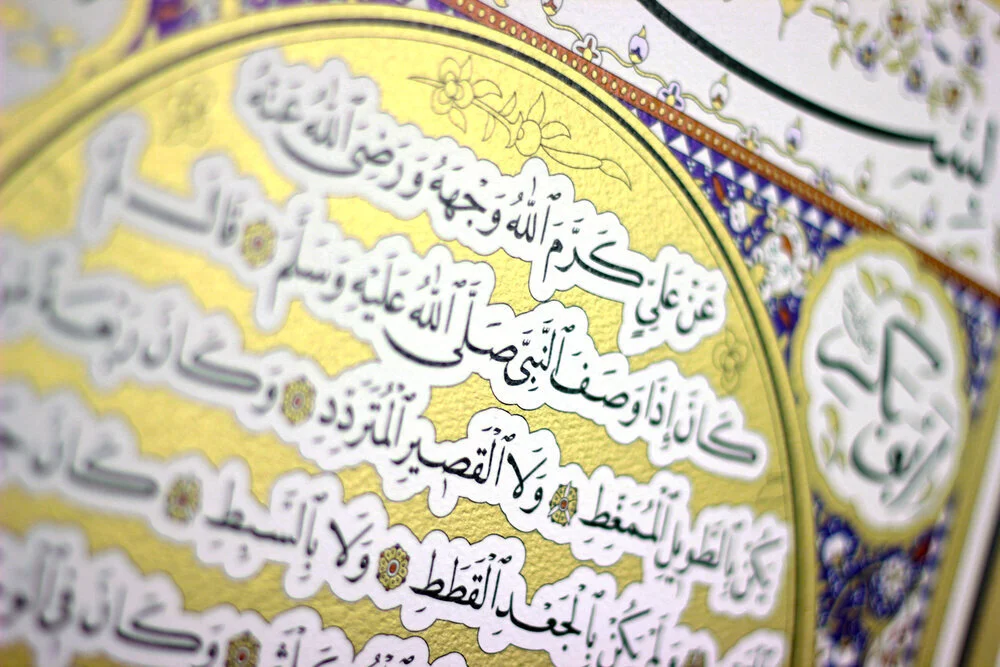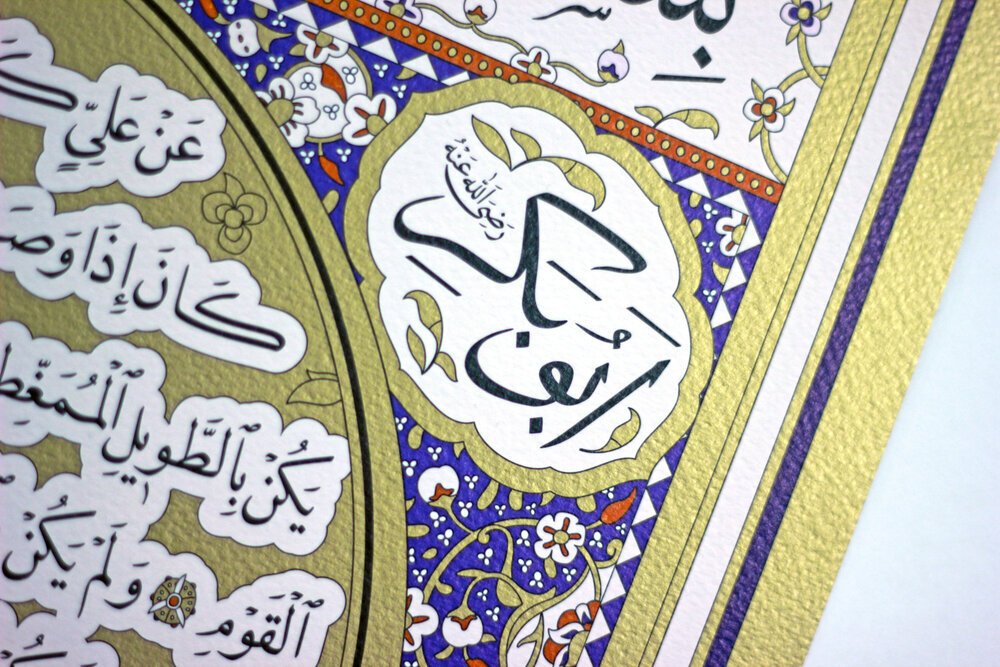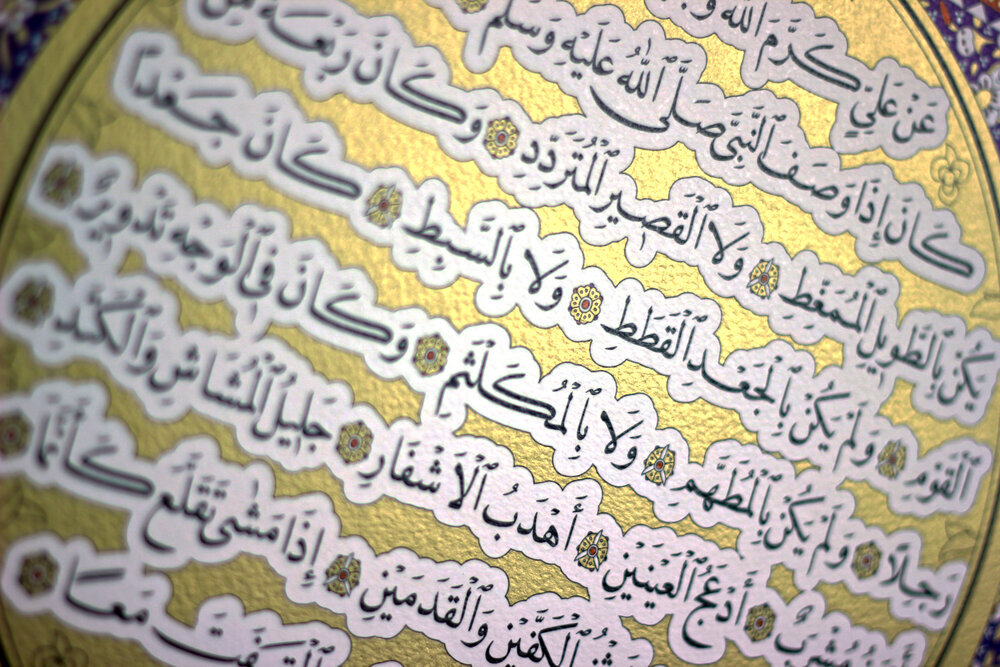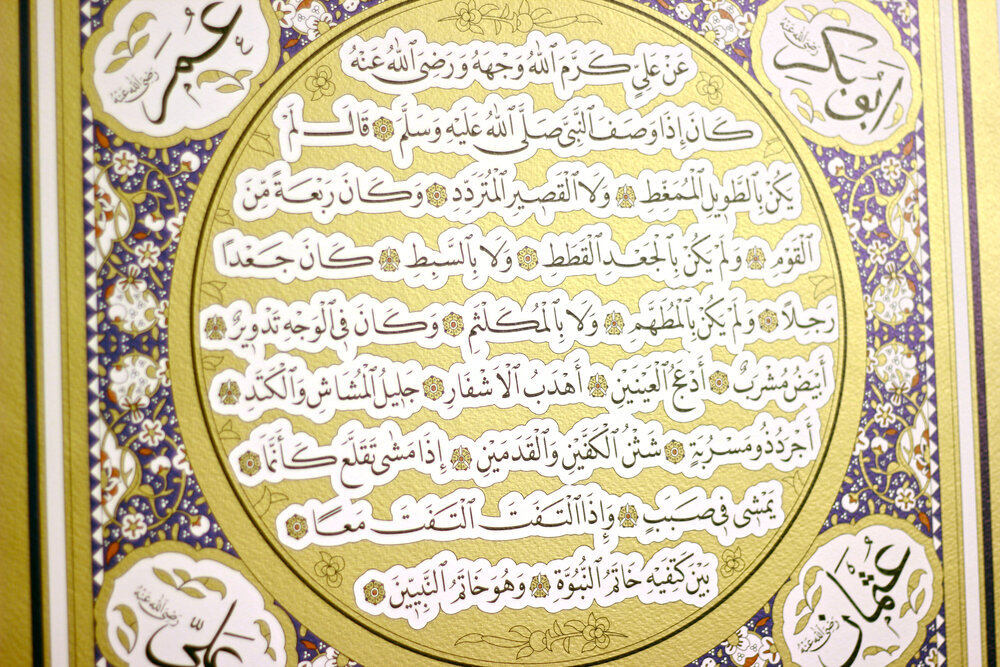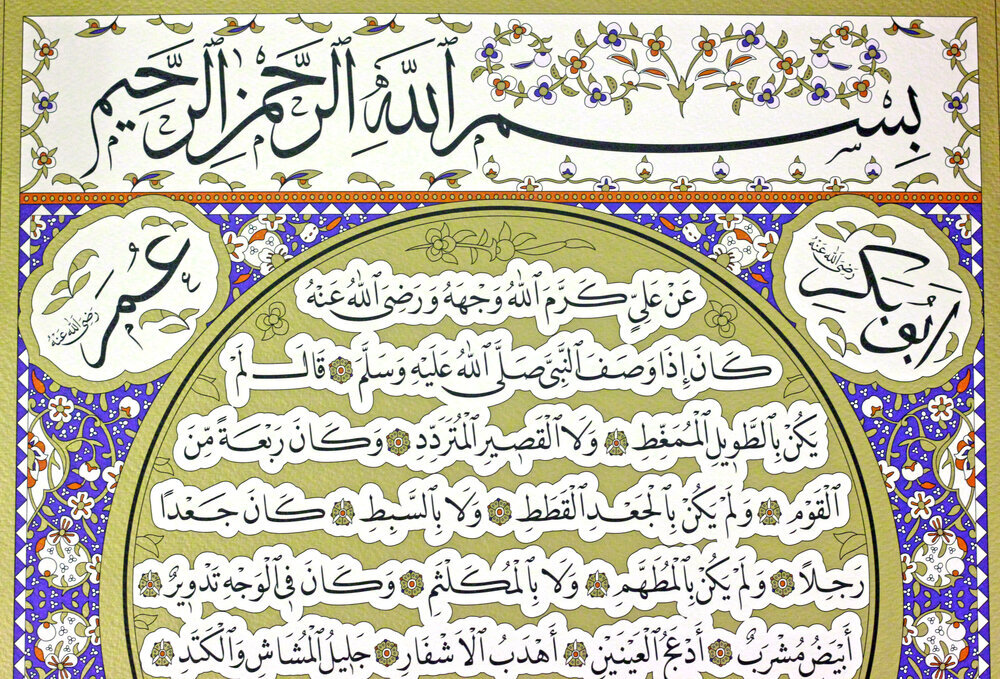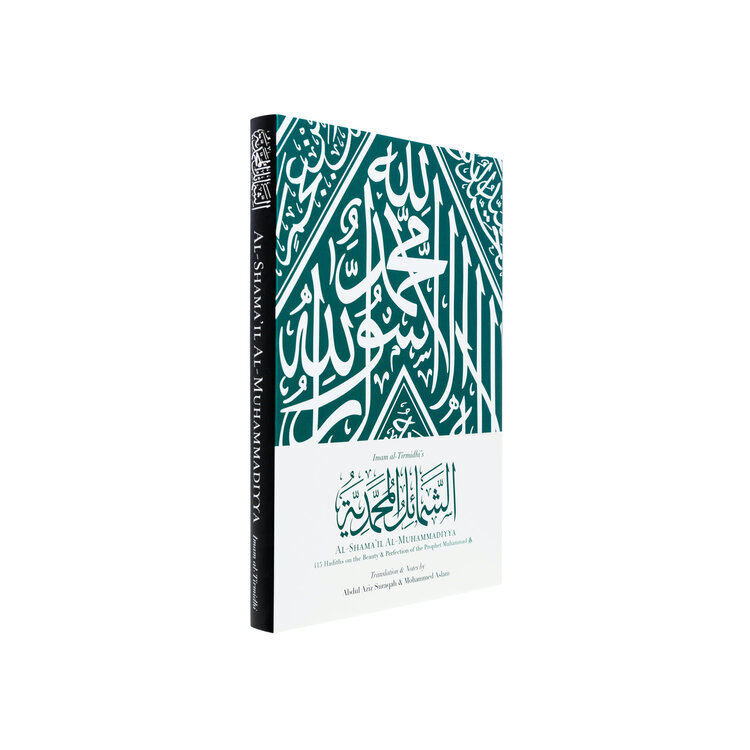traditionally, pictures of the Prophet Muhammad ﷺ are not encouraged.
This is because Muslims hold all prophets, most especially the Prophet Muhammad ﷺ, in the highest honor, and Muslim scholars have long agreed that any depiction of any of the prophets “will always fall short of the reverence and honour due to them.”
Many people from other traditions do not understand this prohibition, and this issue is often the focal point of conflict.
Remembering the Prophet ﷺ without images
The issue of images aside, Muslims are strongly encouraged to keep the Prophet ﷺ on our minds and in our hearts constantly.
Images can help us to remember things.
However, Muslims have devised many methods to be reminded of the Prophet ﷺ without using images.
One of these is the majestic Hilya Sharif.
The Hilya Sharif is a calligraphic arrangement that originated in Ottoman times. This beautiful design has historically been displayed in a prominent place in Muslim households throughout the world.
In one of his Shama’il classes earlier this year, Shaykh Mohammed Aslam discussed the significance of this traditional design:
"It was from the practice of the early Muslims, that they would frame the Hilya Sharif and put it up in their homes, and teach it to their children. Everybody who would pass by the Hilya Sharif would send peace and blessings upon the Prophet ﷺ. So the Hilya Sharif would serve as a reminder that we have the Noble Messenger ﷺ within our homes and within our hearts.”
What does Hilya mean?
The Arabic word “hilya” appears in chapter 1, hadith 8 of the Imam al-Tirmidhi’s Al-Shama’il al-Muhammadiyya.
In IGI’s translation of the Shama’il, the word “hilya” is translated as “beautiful description”:
“Hasan ibn Ali رضي الله عنه reported: “I asked my maternal uncle, Hind ibn Abi Hala, who was skilled in describing features (wassaf), about the beautiful description (hilya) of the Messenger of Allah ﷺ. I desired for him to describe some of his features to me so I could cherish and hold on to them...””
The Hilya Sharif in the frontispiece of IGI’s edition of Imam al-Tirmidhi’s Al-Shama’il al-Muhammadiyya. Shaykh Aslam explains that we included the Hilya Sharif in this edition “in hope that it reaches the homes of every single believing person.”
Rather than translating, the Turkish language adopted the use of the word “hilya” directly, along with all its subtle meanings & connotations:
“Hilye is the Turkish form of the Arabic word hilya, which has several meanings, including physiognomy, natural disposition, likeness, depiction, characterization, and description. But these dictionary definitions only begin to convey the real meaning of the hilye, which embodies the Prophet”s moral, behavioral, and spiritual qualities as well as physical appearance. Like most Arabic words, hilya carries multiple overtones, making it difficult to translate. It has connotations of ornament, beauty, finery, and embellishment.”
The calligraphic arrangement known as the Hilya Sharif were produced in the Ottoman Empire since at least the 1500s, and perhaps earlier.
The components of the Hilya Sharif
Though there are many versions of the Hilya Sharif, in general they all include the following elements:
The central disc of the Hilya Sharif, with the four smaller discs around it
The basmala, often translated as “In the name of God, the Merciful, the Compassionate” at the top
A large central disc, typically containing the description of the Prophet ﷺ found in hadith 7 of the Shama’il
Four smaller discs containing the names of the four rightly-guided caliphs
A verse of the Qur’an containing a description of the Prophet ﷺ, often verse 21:107 or 68:4, below the discs
The remainder of the text of hadith 7 of the Shama’il at the bottom, followed by prayers and blessings upon the Prophet ﷺ
The embellishment and ornamentation of the Hilya Sharif also takes on many different forms & styles.
Where to find a Hilya Sharif
After watching Shaykh Aslam’s classes, many of you asked us where you could purchase a Hilya Sharif for your own home.
We realized it was hard to find.
So, we talked with our printer. We developed a design with our friends in the UK, and ran some test print runs. We reviewed the proofs, the weight of the paper, the quality of the inks. We made some changes. We ran another test print run.
Finally, we had a version that we hope is worthy of this noble design.
We’re also working with our calligrapher & designer to develop a new version of the Hilya Sharif that incorporates English translations of the Arabic text. We hope to work with traditionally trained designers & artists from various parts of the world to help make the Hilya available in other styles. We hope to help Muslims around the world to benefit from the unique blessings of this extraordinary design.
In his discussion of the Hilya, and of the Shama’il in general, Shaykh Aslam repeatedly, emphatically stresses the importance of remembering the Prophet ﷺ while at home:
"Once [the Prophet] ﷺ becomes the one who is most spoken about, most remembered, most revered, and most praised in our homes, we will find that our homes become a different place. We will find that within our homes, we have Gardens of Paradise."
IGI’s version of the Hilya Sharif is available in the bookstore here
In this present time, we believe it is particularly important to revive the practice of displaying the Hilya Sharif in our homes. That’s why IGI has made a version of the Hilya Sharif available in our bookstore.
Perhaps the terrible events of recent times, related to deliberately offensive depictions of Allah’s noble Messenger ﷺ, can serve as a catalyst for Muslims across the world to revive this practice, of connecting to Allah’s Messenger ﷺ through the beautiful word-portrait of the Hilya Sharif.
We’d love to hear your thoughts on this.
Let us know in the comments below.
IGP’s edition of Imam al-Tirmidhi’s Al-Shama’il al-Muhammadiyya, with a version of the Hilya Sharif in the frontispiece, is available in the IGP Bookstore.

